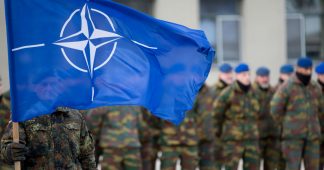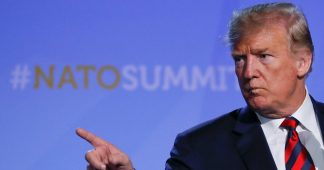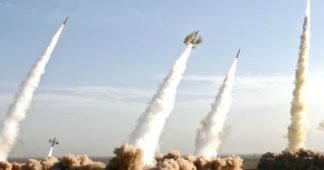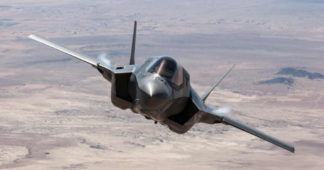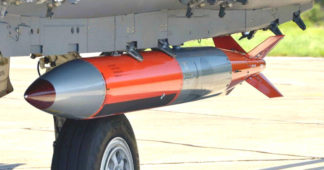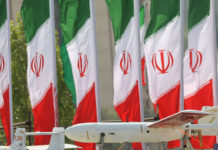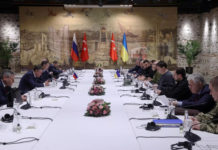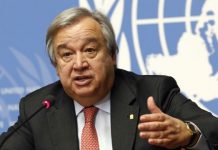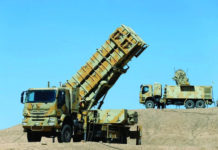When NATO leaders met last month for an emergency meeting to discuss Russia’s invasion of Ukraine, they responded with the continuation and intensification of NATO’s policies of the last thirty years – which have done so much to ferment the catastrophe in Ukraine. This is a transcript of Kate Hudson’s paper that she presented at The Case Against NATO webinar on April 16, 2022, convened by the International Manifesto Group.
By Kate Hudson
Published the International Manifesto Group,
Apr 17, 2022
Click here to watch the entire webinar
***
Ukraine War puts Europe once again under threat of Nuclear War
As we make the case against NATO, the particular charge I would like to make is that it is driving the world towards nuclear war. When NATO leaders met last month for an emergency meeting to discuss Russia’s invasion of Ukraine, they responded with the continuation and intensification of NATO’s policies of the last thirty years. Precisely the policies that have done so much to ferment the catastrophe in Ukraine.
The summit declaration announced the deployment of the NATO Response Force, an additional 40,000 troops on NATO’s eastern border with “significant air and naval assets”, and the establishment of four additional multinational battlegroups in Bulgaria, Hungary, Romania, and Slovakia. NATO is also “accelerating” plans for a new Strategic Concept document, due to be unveiled at its next summit in Madrid in June.
Every Strategic Concept and Heads of State Summit since 1999 has involved an expansion of NATO’s territorial and global reach, more money poured into weapons development and procurement, and more scenarios for intervention. Through this unfolding process, NATO has undertaken its massive expansion into being a global force. In 2019, it even declared space to be an operational domain. Its summit last year expanded NATO’s orientation to the Asia-Pacific, specifically to confront China. It also reinforced the so-called Open-Door policy, the pursuit of expansion that is causing so much trouble. NATO is likely to double down on its hostility to and encirclement of Russia and China, building regional alliances and ramping up the ideological rhetoric – a narrative about freedom which overlooks NATO’s brutal war-fighting and interventionist record.
Last month’s statement also pledged to ‘significantly strengthen our longer-term deterrence and defence posture.’ Given that ‘deterrence’ is generally a euphemism for nuclear weapons, this is very alarming. Where will this take us in nuclear terms? There are already enough nuclear weapons in the world to destroy everything many times over.
NATO and Russia have 12,000 nuclear weapons between them. Today’s bombs are vastly bigger than the Hiroshima bomb which exploded with the power of approximately 15 kilotons of TNT, killing at least 200,000 people. In today’s terminology, the Hiroshima bomb would be called low yield. Many of the world’s larger warheads weigh in at 800 kilotons.
The US also has around 150 free fall nuclear bombs (dropped from planes) located across Europe, assigned to NATO. They are currently being modernised. They have a variable yield up to 170 kilotons and allow for both strategic and tactical use (that’s long and short range). In the event of a nuclear exchange over Ukraine, I think these are the most likely to be used, certainly to start off with. The very bad news from last week is that these weapons are now likely to be brought back to Britain. 110 of these nuclear bombs used to be sited in Suffolk but they were removed in 2008 following intense protest. This is a further escalatory step, bringing more NATO nukes into western Europe. Our worst fear in the 1980s was that a Soviet/NATO nuclear war would be fought in Europe – when millions mobilised across Europe against cruise and Pershing missiles. That is now a very real risk once again.
Another increasing danger is presented by policies on nuclear use. Recent narratives and indeed practices that involve ‘usable’ nukes, or low yield nuclear weapons, have ended the previous taboo on nuclear use. It was based on the idea that the certainty of mutually assured destruction would/must prevent them being fired. In its place, there’s a lot of talk today of tactical nuclear weapons or battlefield nukes, as if they are somehow not very dangerous. This is irresponsible and wrong. Not only would they do massive unrestricted damage in themselves, they would also be highly likely to lead to escalation to larger nuclear weapons use. Also, scenarios in which nuclear weapons could be used have been extended, including by Britain. That was announced in its Integrated Review of security, defence, development and foreign policy last year, which also included the government’s announcement of a big increase in the UK’s nuclear arsenal.
As the invasion began, on 24 February, around 1,000 Russian nuclear weapons – and a similar number of US, British and French nuclear forces assigned to NATO – were already on ‘prompt-launch’ (high-alert) status – this is the normal situation. Most high-alert missiles are armed with strategic nuclear weapons with yields of at least 100 kilotons. They can be launched in 15 minutes and the nominal flight time of Intercontinental Ballistic Missiles carrying these weapons, travelling between the US and Russia, is around 30 minutes.
So, what is the possibility of the Ukraine war turning nuclear? If the war expands into a direct conflict between NATO and Russia then it becomes a probability rather than a possibility. A no-fly zone is the most rapid route to nuclear war. Breach of a NATO-imposed no-fly zone over Ukraine would lead to a direct Russia/NATO war. Moving of heavy weaponry into eastern Ukraine can have the same consequence and senior military figures warn that this can lead to World War Three.
The war has already altered the political balance in Europe and is accelerating its militarisation; this will have a profoundly negative impact on our societies, engendering a culture of violence and national chauvinism. For years there had been talk of the increasing militarisation of the EU, encouraged by the US, basically to pour more resources into NATO. For years, however, there had been little progress. That has now changed. Germany for example, has undertaken a huge about-turn towards war and militarism. So more and more of the people’s money will be squandered on weapons and war, instead of being invested in health, jobs and education.
It has often been said that NATO is the means by which the US makes Europe pay for its wars and its drive for global military hegemony. That is more so the case than ever, and it brings with it ever greater dangers of nuclear annihilation. CND – along with the rest of the international peace movement – has long argued instead for a new common security framework in Europe, not massively increasing militarisation. Despite the fog of war, it is vital that we work towards outcomes that enable a just and lasting peace in the region – and in the wider world. Only dialogue and negotiation, taking into account the wider context of this conflict – and the legitimate security interests of us all – can bring that about in a way that will enable a genuinely secure future for humanity. And nuclear disarmament must be at its heart.
***
Kate Hudson has been General Secretary of the Campaign for Nuclear Disarmament (CND) since 2010, having served as chair since 2003. She has been a key figure in the anti-war movement nationally and internationally and considers international cooperation and solidarity to be the key to our ultimate success.
Click here for more information about CND
Published at newcoldwar.org
We remind our readers that publication of articles on our site does not mean that we agree with what is written. Our policy is to publish anything which we consider of interest, so as to assist our readers in forming their opinions. Sometimes we even publish articles with which we totally disagree, since we believe it is important for our readers to be informed on as wide a spectrum of views as possible.

